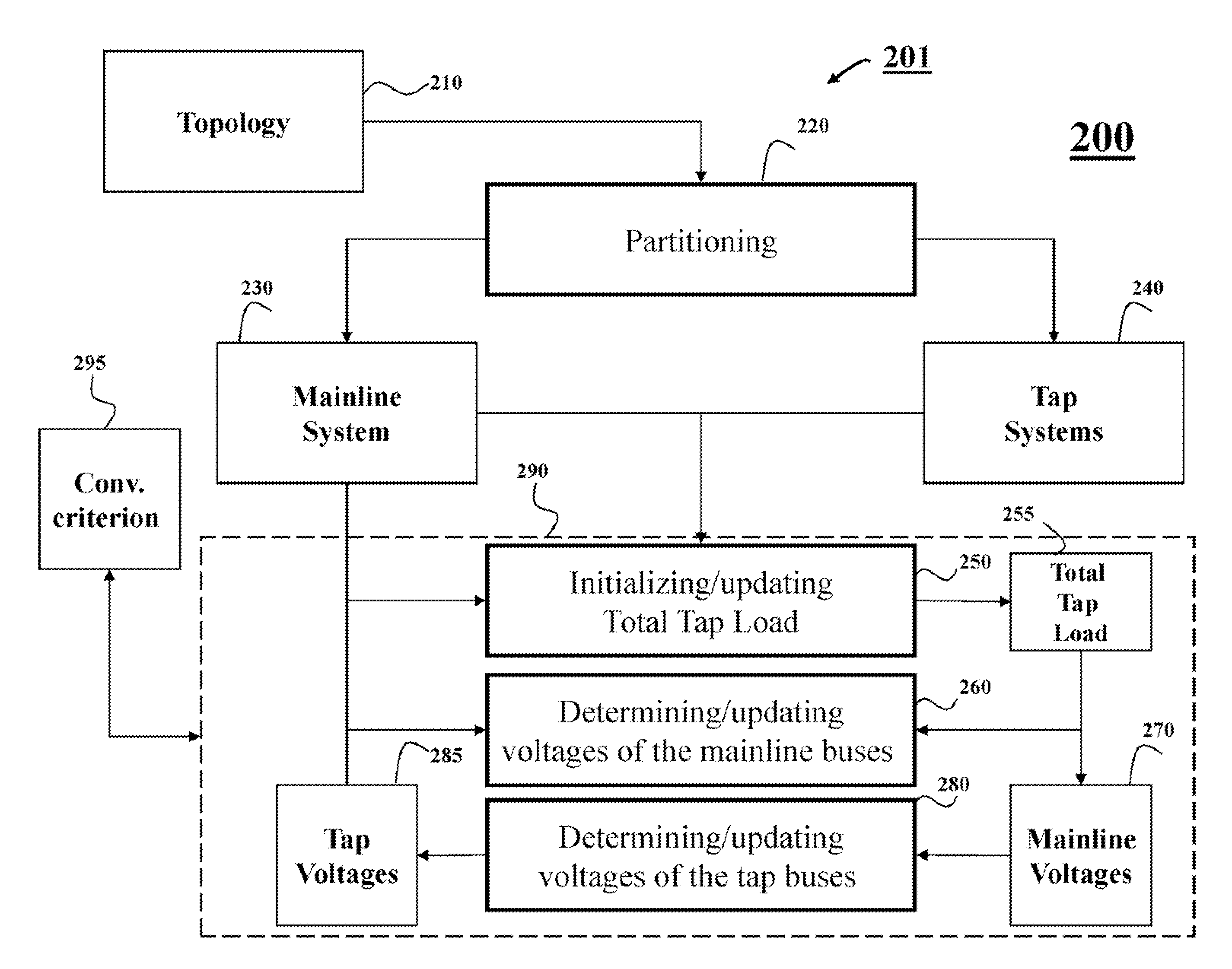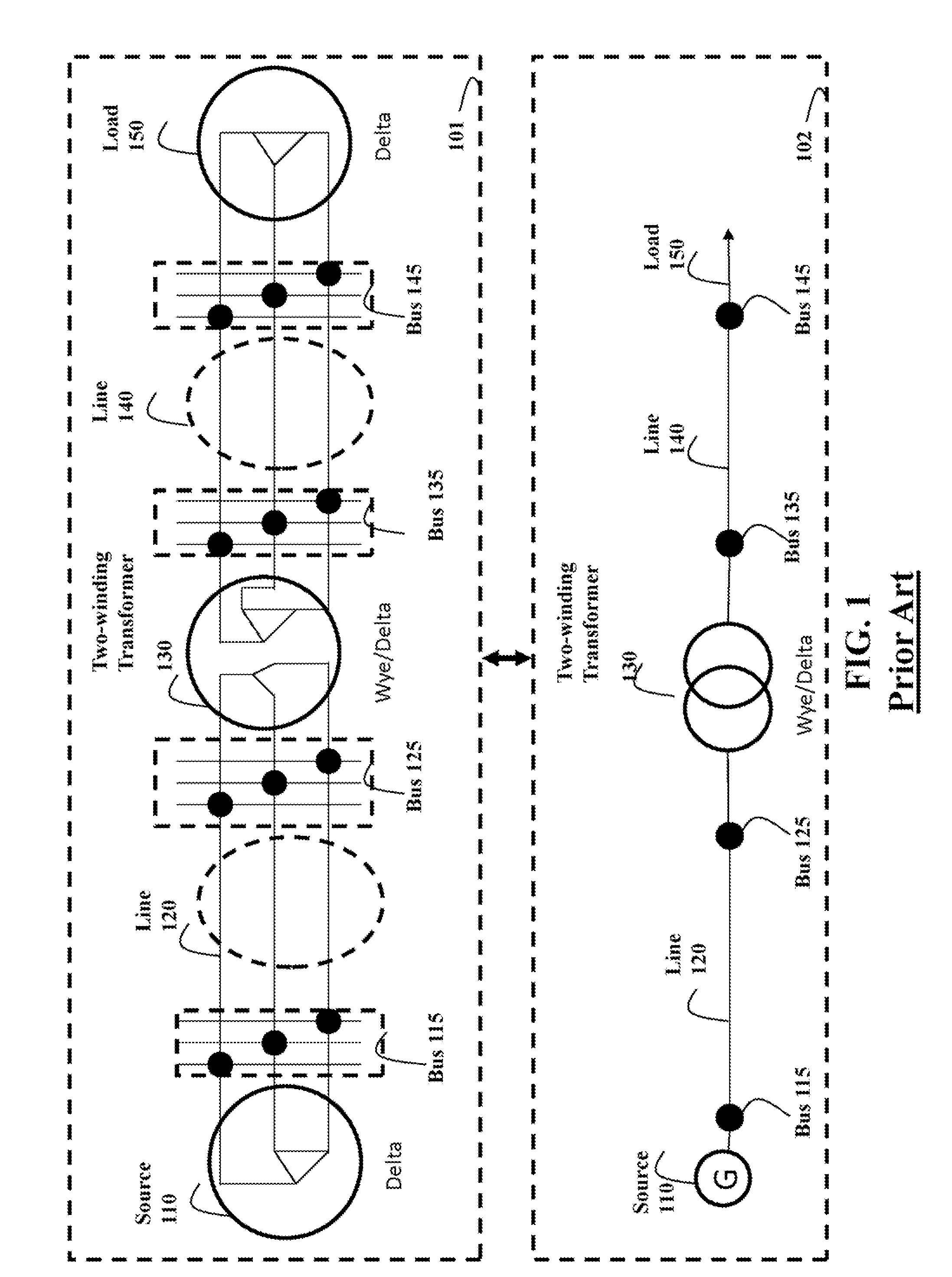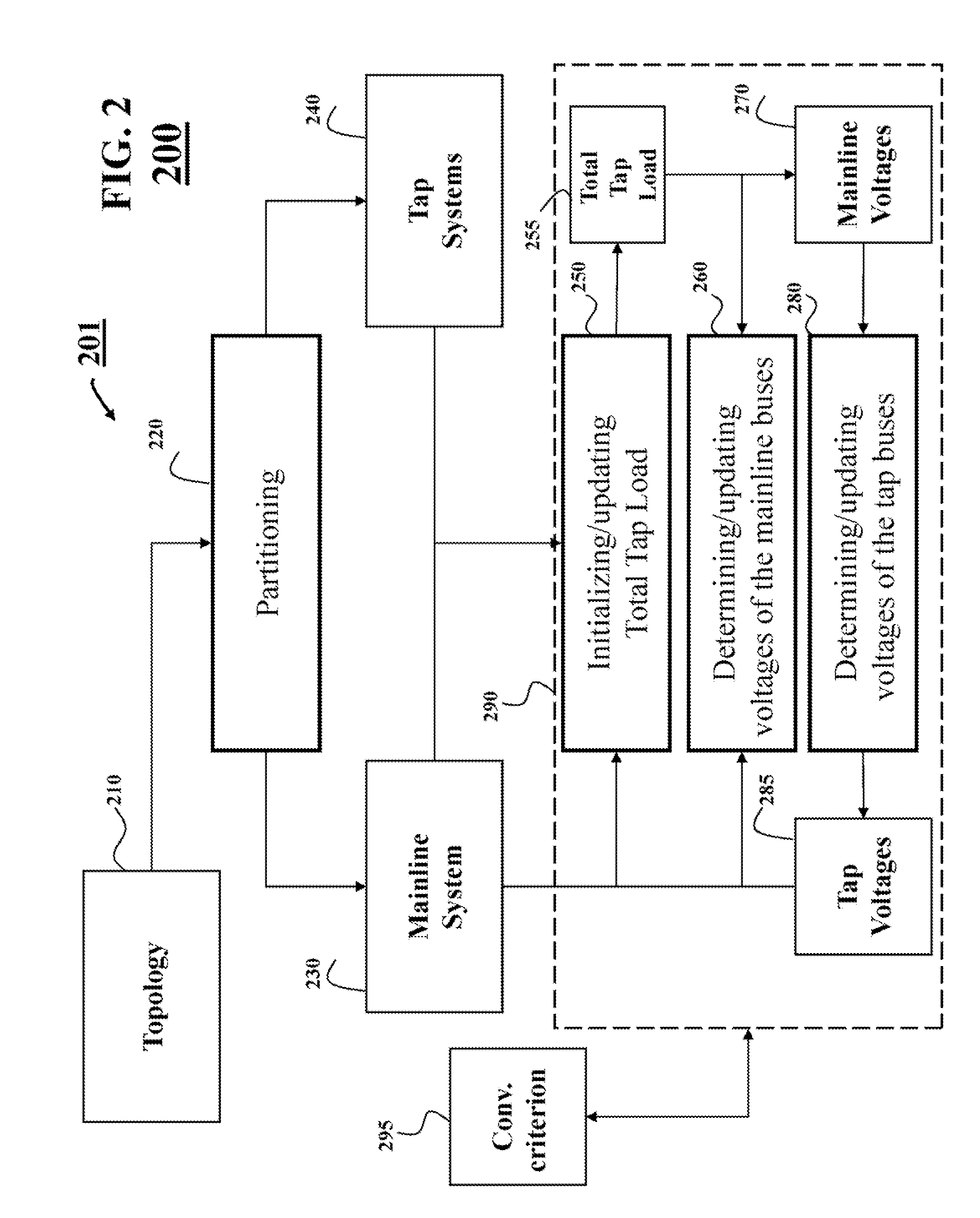Hybrid three-phase power flow analysis method for ungrounded distribution systems
a technology of power flow analysis and ungrounded distribution system, which is applied in the direction of electric controllers, ignition automatic control, instruments, etc., can solve the problems of all methods having their own limitations, and achieve the effects of simplifying the specific analysis of each type of system, fast and accurate, and improving computation efficiency
- Summary
- Abstract
- Description
- Claims
- Application Information
AI Technical Summary
Benefits of technology
Problems solved by technology
Method used
Image
Examples
example
[0125
[0126]FIG. 9 shows a block diagram of a method 900 for analyzing a model of an ungrounded power distribution system according to one embodiment of the invention. Various embodiments of invention use at least part of the steps of the method 900.
[0127]In step 910, three winding transformers are converted into three two-winding transformers to be modeled as shown in FIG. 4. After the conversion, the topology model of the system only contains two-terminal paths.
[0128]In step 915, the topology of the power distribution system is traced from the swing bus, and partition the system into mainline system and tap systems. The mainline system is constructed from all available paths between the swing bus and PV buses as shown in FIG. 3. The mainline system is a meshed system, if there is multiple paths between any pair of swing bus and PV bus existing. A tap system is constructed from one mainline bus and all downstream laterals connected with the bus. Depended on the distance from the bus...
PUM
 Login to View More
Login to View More Abstract
Description
Claims
Application Information
 Login to View More
Login to View More - R&D
- Intellectual Property
- Life Sciences
- Materials
- Tech Scout
- Unparalleled Data Quality
- Higher Quality Content
- 60% Fewer Hallucinations
Browse by: Latest US Patents, China's latest patents, Technical Efficacy Thesaurus, Application Domain, Technology Topic, Popular Technical Reports.
© 2025 PatSnap. All rights reserved.Legal|Privacy policy|Modern Slavery Act Transparency Statement|Sitemap|About US| Contact US: help@patsnap.com



